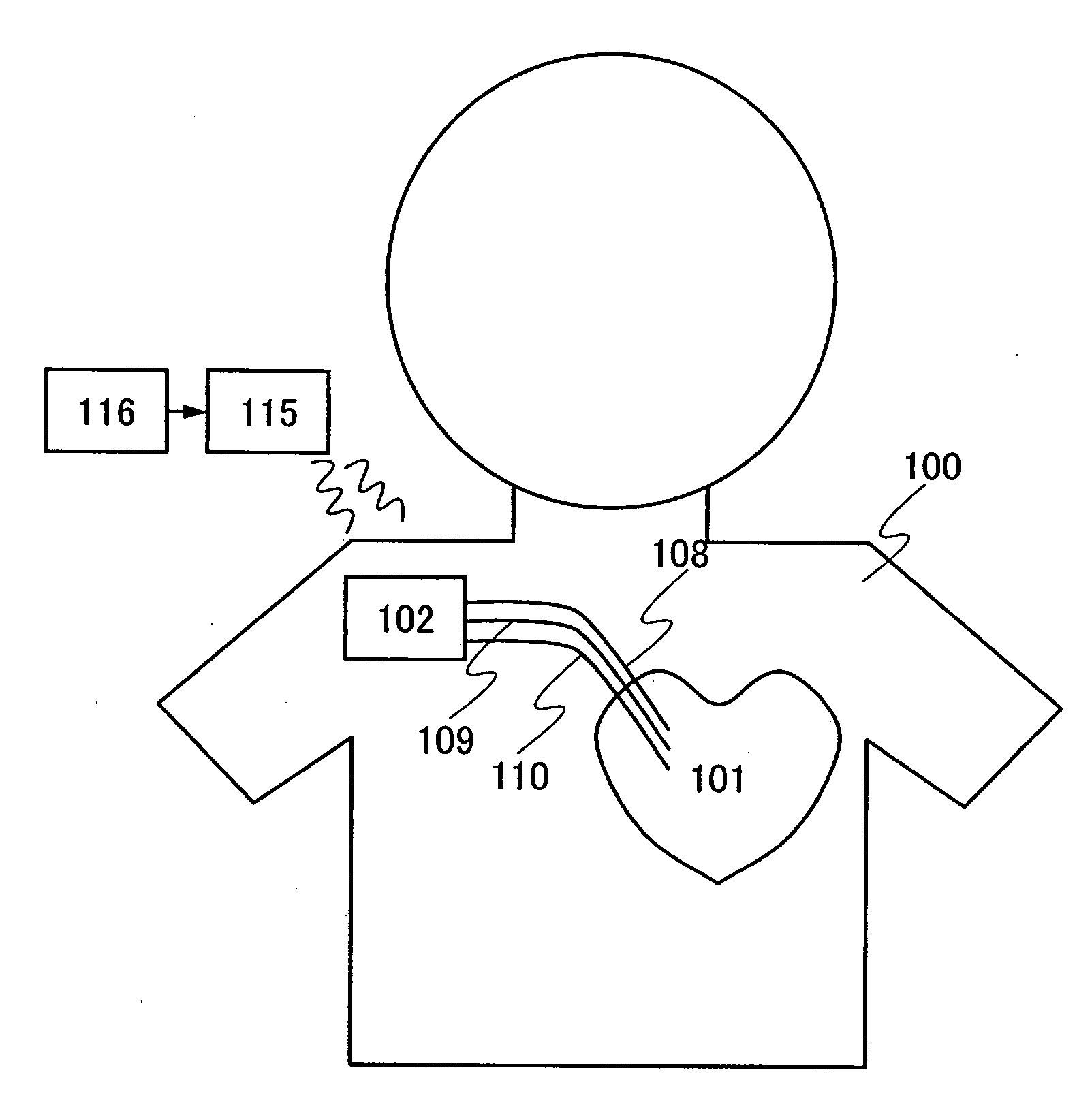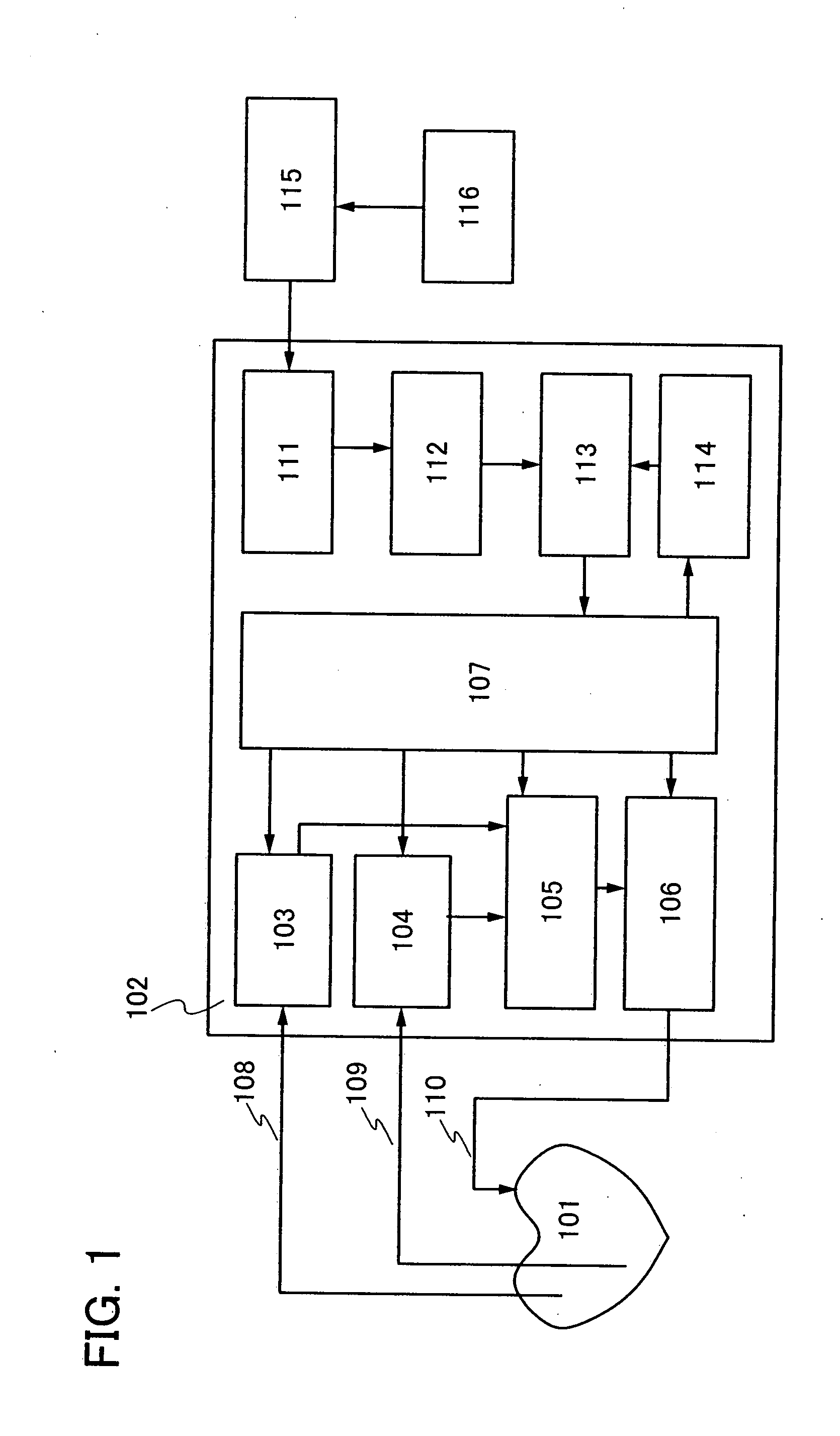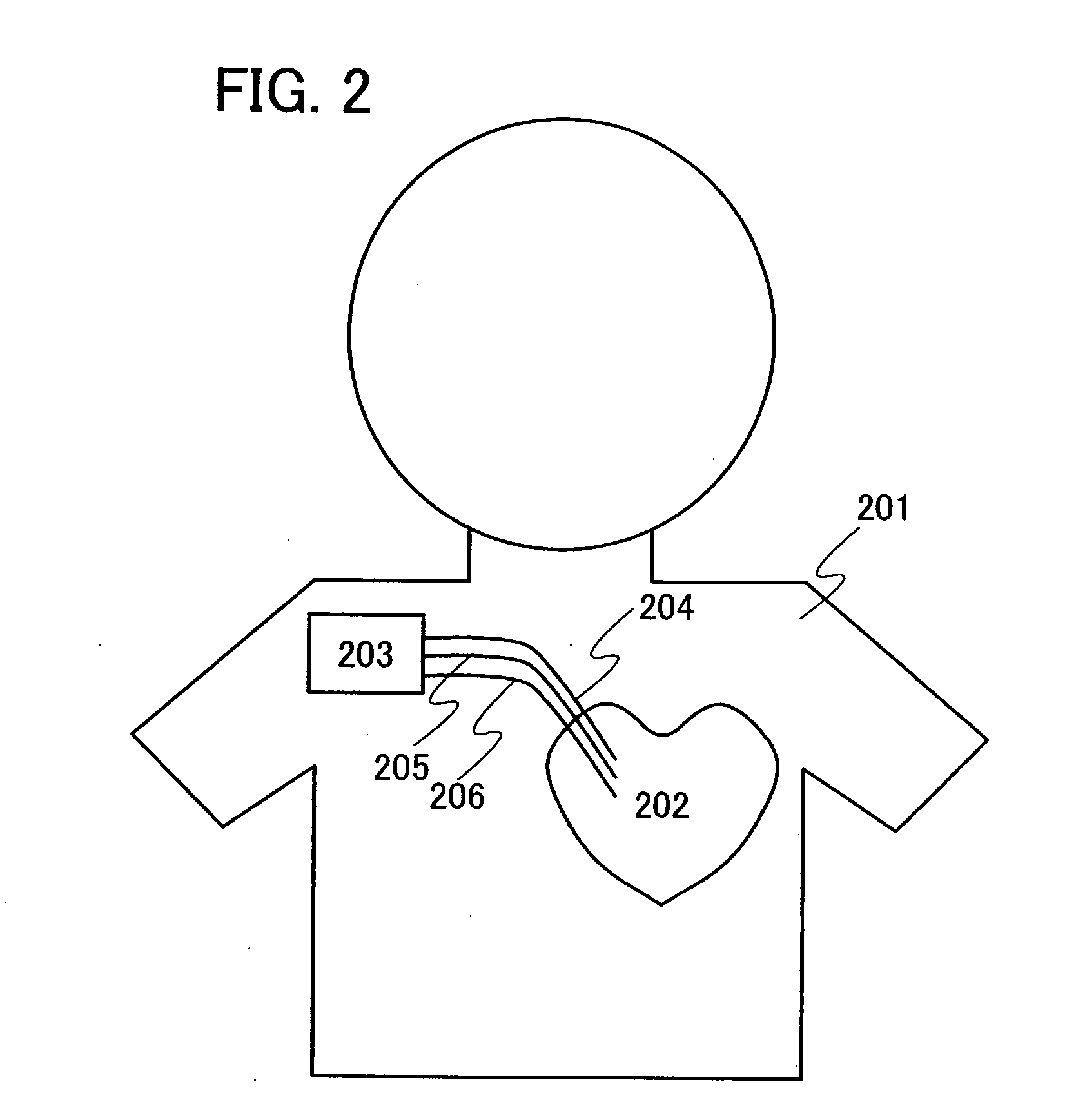Cardiac pacemaker device
a pacemaker and heart technology, applied in the field of cardiac pacemaker devices, can solve problems such as physical suffering of patients, and achieve the effect of reducing burden, and reducing the replacement frequency of cells
- Summary
- Abstract
- Description
- Claims
- Application Information
AI Technical Summary
Benefits of technology
Problems solved by technology
Method used
Image
Examples
embodiment 1
[0043]FIG. 6 shows a first embodiment. FIG. 6 shows a structure of a cardiac pacemaker device of the present invention. In this embodiment, the cardiac pacemaker device includes an upper-side chassis 601, a lower-side chassis 602, a built-in antenna 603, a secondary cell 604, a circuit board 605, wirings 606 and 607, and 608 reaching a heart.
[0044]Since the cardiac pacemaker device of this embodiment wirelessly obtains an electric power, an electromagnetic wave needs to reach inside the cardiac pacemaker device. The upper-side chassis 601 and the lower-side chassis 602 of the cardiac pacemaker device shown in this embodiment need to pass an electromagnetic wave; therefore, most of the upper-side chassis 601 and the lower-side chassis 602 are formed of an insulator. The upper-side chassis 601 and the lower-side chassis 602 are desirably formed of a resin. In addition, depending on the movement of a patient, the cardiac pacemaker device is subjected to various forces. The upper-side c...
embodiment 2
[0048]FIG. 7 shows a second embodiment. A cardiac pacemaker device of this embodiment in FIG. 7 includes an upper-side chassis 701, a lower-side chassis 702, a built-in antenna 703, a thin film secondary cell 704, a circuit board 705, and wirings 706, 707, and 708 reaching a heart. The thin film secondary cell is formed of a lithium compound, and the thickness thereof can be made less than or equal to 10 μm. In addition, the circuit board 705 can be formed with a flexible thin film circuit film with the use of a thin film transistor. In such a case, the thickness of the circuit board 705 can be made less than or equal to 100 μm. Moreover, by the built-in antenna formed over a flexible substrate, the thickness can also be made less than or equal to 100 μm. As described above, the thickness of the upper-side chassis 701 and the lower-side chassis 702 can be made less than or equal to 0.5 mm. Therefore, the thickness of the cardiac pacemaker device of this embodiment can be made less t...
embodiment 3
[0054]Hereinafter, the thin film secondary cell used in Embodiment 2 will be explained. There is a nickel-cadmium cell, a lithium-ion secondary cell, a lead cell, or the like as a secondary cell, and a lithium-ion cell is widely used due to the advantage such as lack of a memory effect and the large current amount.
[0055]In addition, research on thinning a lithium-ion cell has recently been carried out and a lithium-ion cell having a thickness of 1 to several μm has been manufactured. Such a thin film secondary cell can be utilized as a flexible secondary cell.
[0056]FIG. 8 shows an example of the thin film secondary cell, which is a cross-sectional example of a lithium-ion thin film cell. A collector thin film 502 to be an electrode is formed over a substrate 501. The collector thin film 502 has favorable adhesiveness to an anode active material layer 503 and needs to have low resistance; thus, aluminum, copper, nickel, vanadium, or the like can be used. The anode active material lay...
PUM
 Login to View More
Login to View More Abstract
Description
Claims
Application Information
 Login to View More
Login to View More - R&D
- Intellectual Property
- Life Sciences
- Materials
- Tech Scout
- Unparalleled Data Quality
- Higher Quality Content
- 60% Fewer Hallucinations
Browse by: Latest US Patents, China's latest patents, Technical Efficacy Thesaurus, Application Domain, Technology Topic, Popular Technical Reports.
© 2025 PatSnap. All rights reserved.Legal|Privacy policy|Modern Slavery Act Transparency Statement|Sitemap|About US| Contact US: help@patsnap.com



